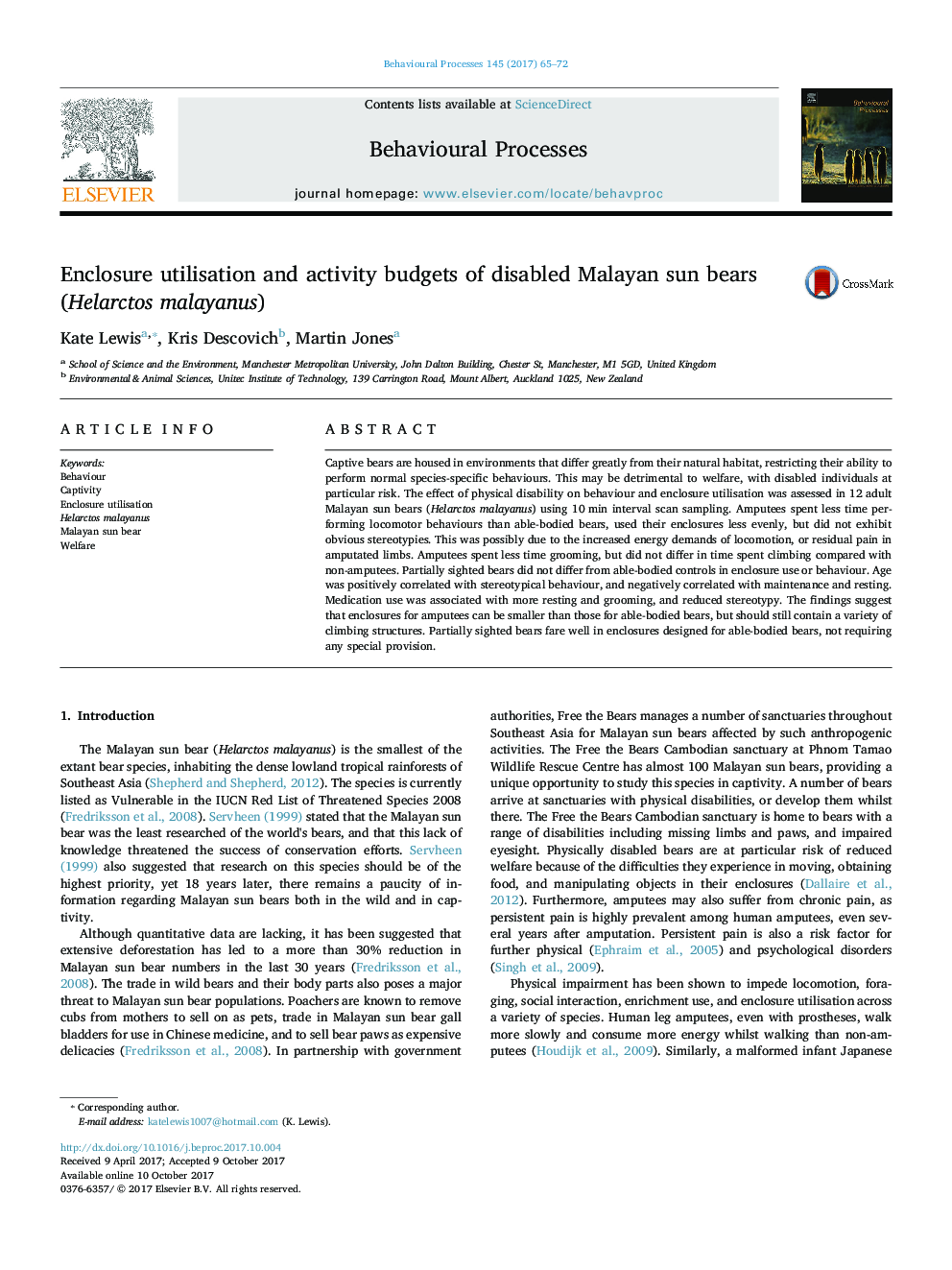| Article ID | Journal | Published Year | Pages | File Type |
|---|---|---|---|---|
| 5539637 | Behavioural Processes | 2017 | 8 Pages |
â¢The behaviour and enclosure utilisation of disabled Malayan sun bears were studied.â¢Amputees used enclosures less evenly, and groomed and paced less than non-amputees.â¢Partially sighted bears did not use enclosures or behave differently from controls.â¢Sun bear behaviour was also influenced by age and enclosure.â¢Recommendations are suggested for disabled sun bear enclosure design and husbandry.
Captive bears are housed in environments that differ greatly from their natural habitat, restricting their ability to perform normal species-specific behaviours. This may be detrimental to welfare, with disabled individuals at particular risk. The effect of physical disability on behaviour and enclosure utilisation was assessed in 12 adult Malayan sun bears (Helarctos malayanus) using 10Â min interval scan sampling. Amputees spent less time performing locomotor behaviours than able-bodied bears, used their enclosures less evenly, but did not exhibit obvious stereotypies. This was possibly due to the increased energy demands of locomotion, or residual pain in amputated limbs. Amputees spent less time grooming, but did not differ in time spent climbing compared with non-amputees. Partially sighted bears did not differ from able-bodied controls in enclosure use or behaviour. Age was positively correlated with stereotypical behaviour, and negatively correlated with maintenance and resting. Medication use was associated with more resting and grooming, and reduced stereotypy. The findings suggest that enclosures for amputees can be smaller than those for able-bodied bears, but should still contain a variety of climbing structures. Partially sighted bears fare well in enclosures designed for able-bodied bears, not requiring any special provision.
